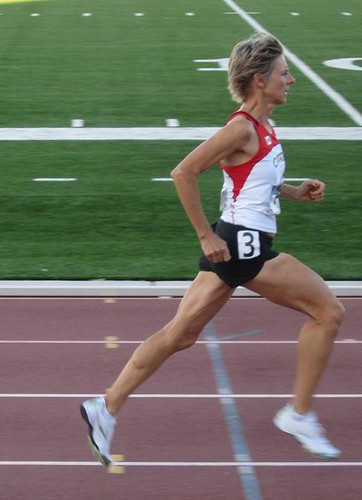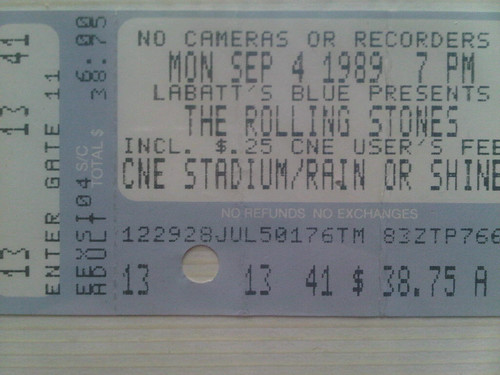 This is the 21st in a series of RunSmart videos. The series is on-going, with a new video released on a biweekly basis. These videos complement the material presented in the book “RunSmart: A Comprehensive Approach To Injury-Free Running”. The full series of videos can be found here. A compilation of the first 10 videos will be available on Vimeo as well.
This is the 21st in a series of RunSmart videos. The series is on-going, with a new video released on a biweekly basis. These videos complement the material presented in the book “RunSmart: A Comprehensive Approach To Injury-Free Running”. The full series of videos can be found here. A compilation of the first 10 videos will be available on Vimeo as well.
In this video, I discuss training for the masters athlete. Training principles will remain the same, however recovery becomes far more critical as we get older.
For those of you that are interested in a more interactive learning environment, consider attending a Level One (half day), Level Two (one day), or Level Three (two day) RunSmart program. The Level One program is 4 hours and focuses on basic training principles, running mechanics, and injury prevention. The Level Two program is 8.5 hours and focuses on performance optimization and training program development. The Level Three program is a two day, 15 hour program that includes a comprehensive approach to running injuries. The next Level Three program will be offered in Austin, Texas on August 17 - 18, 2012.
 By 2015, all physical therapist educational programs will be clinical doctorate degrees. Along with this transition, it has been proposed that all physical therapist assistant educational programs become Bachelor’s degrees by 2030. A similar trend exists in the worlds of pharmacy and nursing.
By 2015, all physical therapist educational programs will be clinical doctorate degrees. Along with this transition, it has been proposed that all physical therapist assistant educational programs become Bachelor’s degrees by 2030. A similar trend exists in the worlds of pharmacy and nursing.
But is this the right direction to take? Or did the profession of physical therapy in the United States develop a faulty plan built on faulty assumptions, and then sell that to the profession? Is it degree bloat? Or value-added benefit?
Here are 10 points to ponder.
 It’s time for another installment of the Rhubarb Report. It shouldn’t surprise anyone that this week’s Report has a few fine political morsels. But it also has a note of passing, and a thank you card attached.
It’s time for another installment of the Rhubarb Report. It shouldn’t surprise anyone that this week’s Report has a few fine political morsels. But it also has a note of passing, and a thank you card attached.
With that said, let’s dive right in to Episode 45.
1. From the pit-of-your-stomach, sounds-wrong-because-it-probably-is department, I bring you Mitt Romney and his tax records. Actually, I bring you one – no, sorry, make that almost two – years of tax returns from the presidential candidate.
Two years of returns. That’s it. Why not more? Is there something hiding in there? Let’s face it - if there wasn’t anything to hide, the easiest way to put this issue to rest once and for all would be to release more returns to the public. Simple. Unless, of course, there is something to hide.
 Does a patient really know what quality is in health care?
Does a patient really know what quality is in health care?
I never thought this was a debate (more on my rationale later) until I participated in a discussion on Twitter last week (#solvePT for those who would like to follow and contribute).
It was a tale of contrasting opinions. Some noted that they didn’t think that the patient could adequately define quality of care, and that there had to be some “objective” means of measuring it. Others remarked that quality and value to the patient may in fact be inter-related. It was also noted that even if you provide a patient with effective care defined by evidence-based guidelines, they still might not feel like there was value – even if the problem was resolved!
Health care providers would benefit from looking at other groups that provide services in a market economy. So what happens with other trades or professions that provide services? And how do their customers define quality?
 Transparency. It has a way of breeding trust amongst groups and individuals. But there is so little of it anymore – with hidden agendas at every turn – that I think most consumers think it doesn’t even exist anymore.
Transparency. It has a way of breeding trust amongst groups and individuals. But there is so little of it anymore – with hidden agendas at every turn – that I think most consumers think it doesn’t even exist anymore.
Those hidden agendas exist throughout health care. But what about the evidence? For example, the data to support consumer direct access to physical therapy has existed for years. All of the “issues” presented by our counterparts simply don’t exist, nor have they in any other country in the world.
So why is it that the legislative powers-that-be aren’t listening?
We actually have that answer. It can be found in the back room finagling and lobbying that consumers and physical therapists alike don’t see and just won’t discuss publicly. Until now.
 I would have to admit that it is, at first, an odd phrase to utter: the Rolling Stones are 50 years old. Say what? Seriously? Hard to believe, isn’t it? Queen Elizabeth II just celebrated 60 years on the throne. Now, the Rolling Stones celebrate their golden jubilee, with 50 years on the throne as the undisputed kings of rock and roll.
I would have to admit that it is, at first, an odd phrase to utter: the Rolling Stones are 50 years old. Say what? Seriously? Hard to believe, isn’t it? Queen Elizabeth II just celebrated 60 years on the throne. Now, the Rolling Stones celebrate their golden jubilee, with 50 years on the throne as the undisputed kings of rock and roll.
In 1974, they said “it’s only rock and roll”. Little did they know just what rock and roll would mean to the culture as a whole over the past 5 decades.
We can thank the Stones for bringing the blues to mainstream awareness. It started with the name – derived from a Muddy Waters song. The blues inflections didn’t stop there though. Their earlier music had that greasy, behind-the-beat vibe of the blues greats. Somehow, they translated this feel into some of the greatest rock and roll songs of our era. A Jagger – Richards song can be a thing of beauty, and only 3 or 4 chords total.
A good band might put out some good albums, but the real test is in the live performances. After all these years, this is what continues to be the life blood of the Rolling Stones.
 This is the 20th in a series of RunSmart videos. The series is on-going, with a new video released on a biweekly basis. These videos complement the material presented in the book “RunSmart: A Comprehensive Approach To Injury-Free Running”. The full series of videos can be found here. A compilation of the first 10 videos will be available on Vimeo as well.
This is the 20th in a series of RunSmart videos. The series is on-going, with a new video released on a biweekly basis. These videos complement the material presented in the book “RunSmart: A Comprehensive Approach To Injury-Free Running”. The full series of videos can be found here. A compilation of the first 10 videos will be available on Vimeo as well.
In this video, I discuss the importance of mechanisms. The mechanisms of optimal human performance are one and the same as those that prevent injury and allow a runner to recover from an injury. This is important when considering training principles.
For those of you that are interested in a more interactive learning environment, consider attending a Level One (half day), Level Two (one day), or Level Three (two day) RunSmart program. The Level One program is 4 hours and focuses on basic training principles, running mechanics, and injury prevention. The Level Two program is 8.5 hours and focuses on performance optimization and training program development. The Level Three program is a two day, 15 hour program that includes a comprehensive approach to running injuries. The next Level Three program will be offered in Austin, Texas on August 17 - 18, 2012.
 "Running Injuries: Etiology And Recovery- Based Treatment" (co-author Bridget Clark, PT) appears in the third edition and fourth editions of "Clinical Orthopaedic Rehabilitation: A Team Approach" by Charles Giangarra, MD and Robert C. Manske, PT.
"Running Injuries: Etiology And Recovery- Based Treatment" (co-author Bridget Clark, PT) appears in the third edition and fourth editions of "Clinical Orthopaedic Rehabilitation: A Team Approach" by Charles Giangarra, MD and Robert C. Manske, PT.
 Allan Besselink, PT, DPT, Ph.D., Dip.MDT has a unique voice in the world of sports, education, and health care. Read more about Allan here.
Allan Besselink, PT, DPT, Ph.D., Dip.MDT has a unique voice in the world of sports, education, and health care. Read more about Allan here.
 Top 5 finalist in three categories: "Best Overall Blog", "Best PT Blog" and "Best Advocacy Blog".
Top 5 finalist in three categories: "Best Overall Blog", "Best PT Blog" and "Best Advocacy Blog".